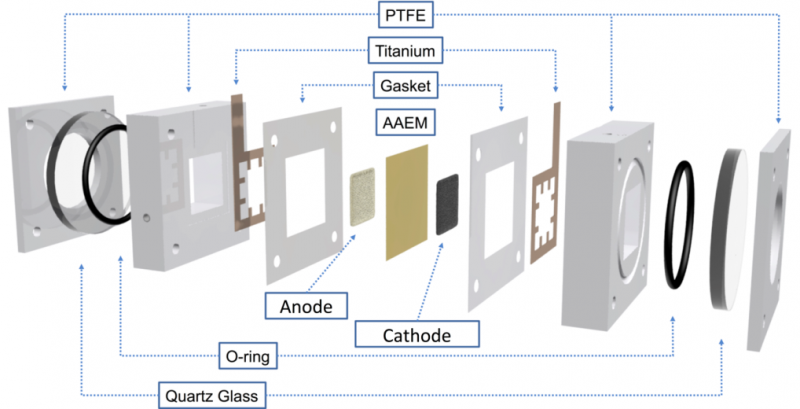Project summary
Water electrolysis has emerged to be an appealing solution to generate hydrogen (H2) from the ubiquitous seawater. By coupling with a renewable electricity source (like photovoltaic cells), a sustainable energy conversion and storage system could be fabricated to efficiently convert the abundant but diffusive renewable energy sources (e.g. solar energy) into portable chemical fuels (such as H2). However, the efficiency of water electrolysis is impeded by the sluggish 4-proton-coupled oxygen evolution reaction (OER) on its anode, making the practical application of this system far from reality. Chloride oxidation to chlorine is a potential alternative to water oxidation to oxygen as Cl− is a major component of seawater. Notably, seawater is 97% of Earth’s water supply and contains >3% by weight of NaCl (550 mM). As a 2-electron-invloved reaction process, Cl− oxidation is 45% less demanding energetically, with ΔG° = 2.72 eV, compared to ΔG° = 4.92 eV for H2O oxidation. Chlorine gas is used in a wide variety of applications, including in production of construction materials such as polyvinyl chloride (PVC), in organic synthesis, in metallurgy, and in water treatment.
In this regard, we focus on the fabrication of robust and efficient working electrodes (based on earth abundant elements such as first row transition metal and carbon) for electrochemical seawater splitting to simultaneously produce Cl2 and H2 gases. The chemical compositions, catalyst structures as well as electrode configurations will be carefully tuned and optimized to boost the energy efficiency and stability of the electrodes in seawater, and eventually reach a solar-to-chemical conversion efficiency > 10%.
Figure 1. Schematic illustration of a customized water electrolyser cell for seawater splitting to produce Cl2 and H2
Supervisor:
- Scientia Prof Rose Amal
- Dr Xunyu Lu
- Dr Rahman Daiyan
Related published article: Energy and Environmental Science (EES), 2018, 11, 1898-1910
